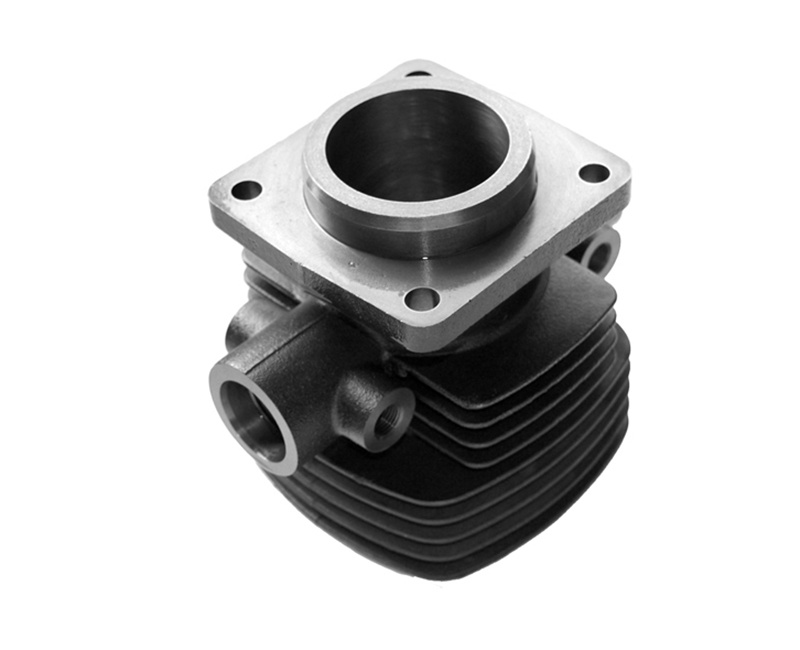22
2024
-
03
Unveiling the Mechanisms of Four Stroke Engine Parts: A Comprehensive Guide for Car Enthusiasts
Author:
# Introduction
In the realm of automotive engineering, the four-stroke engine stands as a pinnacle of technological innovation. This sophisticated piece of machinery comprises several intricate parts that work in harmony to propel your vehicle forward. Join us on a journey as we unravel the mysteries of these crucial components and gain a deeper understanding of how they operate.
## The Piston: Powering the Engine
At the heart of the four-stroke engine lies the piston, a cylindrical piece that moves up and down within the cylinder. As the fuel-air mixture ignites, the piston is forced downwards, generating power to drive the crankshaft and ultimately, the wheels of your car. This simple yet powerful component plays a vital role in the engine's operation.
### Understanding Piston Rings
To ensure optimal performance, pistons are equipped with piston rings that help seal the combustion chamber and prevent leakage of gases. These rings also aid in reducing friction between the piston and cylinder wall, enhancing overall efficiency.
#### Types of Piston Rings
There are several types of piston rings, each serving a specific purpose. Compression rings seal the combustion chamber, oil control rings regulate oil consumption, and spacer rings maintain proper ring alignment. Understanding these distinctions is key to maximizing engine performance.
## The Crankshaft: Transforming Linear Motion into Rotation
As the piston moves up and down, it transfers linear motion to the crankshaft, a crucial component responsible for converting this motion into rotational force. The crankshaft's intricate design and configuration enable it to harness the engine's power and deliver it to the transmission for smooth operation.
### Balancing and Counterweights
To counteract the inherent vibration generated by the piston's movement, the crankshaft is equipped with counterweights that help balance the engine's rotating assembly. This meticulous balancing ensures smooth operation and minimizes wear on engine components.
#### Bearing Surfaces
The crankshaft features bearing surfaces that support the rotating assembly and reduce friction during operation. Proper lubrication is essential to prevent premature wear and ensure the longevity of the engine.
## The Camshaft: Controlling Valve Timing
Responsible for regulating the opening and closing of the engine's valves, the camshaft plays a critical role in the four-stroke cycle. By synchronizing the movement of the valves with the piston's position, the camshaft ensures optimal combustion efficiency and power output.
### Timing Belt or Chain
In many engines, the camshaft is driven by either a timing belt or chain that connects it to the crankshaft. This belt or chain must be carefully maintained to prevent slippage or breakage, which can lead to catastrophic engine failure.
#### Variable Valve Timing
Some modern engines are equipped with variable valve timing technology, which allows the camshaft to adjust valve timing based on operating conditions. This innovative feature improves fuel efficiency and performance while reducing emissions.
## Conclusion
As we conclude our exploration of the inner workings of four-stroke engine parts, we gain a newfound appreciation for the complexity and precision of these components. From the piston to the camshaft, each part plays a vital role in ensuring the engine's smooth and efficient operation. By understanding these mechanisms, we can better appreciate the marvel of automotive engineering and the incredible power that drives our vehicles forward.
In the realm of automotive engineering, the four-stroke engine stands as a pinnacle of technological innovation. This sophisticated piece of machinery comprises several intricate parts that work in harmony to propel your vehicle forward. Join us on a journey as we unravel the mysteries of these crucial components and gain a deeper understanding of how they operate.
## The Piston: Powering the Engine
At the heart of the four-stroke engine lies the piston, a cylindrical piece that moves up and down within the cylinder. As the fuel-air mixture ignites, the piston is forced downwards, generating power to drive the crankshaft and ultimately, the wheels of your car. This simple yet powerful component plays a vital role in the engine's operation.
### Understanding Piston Rings
To ensure optimal performance, pistons are equipped with piston rings that help seal the combustion chamber and prevent leakage of gases. These rings also aid in reducing friction between the piston and cylinder wall, enhancing overall efficiency.
#### Types of Piston Rings
There are several types of piston rings, each serving a specific purpose. Compression rings seal the combustion chamber, oil control rings regulate oil consumption, and spacer rings maintain proper ring alignment. Understanding these distinctions is key to maximizing engine performance.
## The Crankshaft: Transforming Linear Motion into Rotation
As the piston moves up and down, it transfers linear motion to the crankshaft, a crucial component responsible for converting this motion into rotational force. The crankshaft's intricate design and configuration enable it to harness the engine's power and deliver it to the transmission for smooth operation.
### Balancing and Counterweights
To counteract the inherent vibration generated by the piston's movement, the crankshaft is equipped with counterweights that help balance the engine's rotating assembly. This meticulous balancing ensures smooth operation and minimizes wear on engine components.
#### Bearing Surfaces
The crankshaft features bearing surfaces that support the rotating assembly and reduce friction during operation. Proper lubrication is essential to prevent premature wear and ensure the longevity of the engine.
## The Camshaft: Controlling Valve Timing
Responsible for regulating the opening and closing of the engine's valves, the camshaft plays a critical role in the four-stroke cycle. By synchronizing the movement of the valves with the piston's position, the camshaft ensures optimal combustion efficiency and power output.
### Timing Belt or Chain
In many engines, the camshaft is driven by either a timing belt or chain that connects it to the crankshaft. This belt or chain must be carefully maintained to prevent slippage or breakage, which can lead to catastrophic engine failure.
#### Variable Valve Timing
Some modern engines are equipped with variable valve timing technology, which allows the camshaft to adjust valve timing based on operating conditions. This innovative feature improves fuel efficiency and performance while reducing emissions.
## Conclusion
As we conclude our exploration of the inner workings of four-stroke engine parts, we gain a newfound appreciation for the complexity and precision of these components. From the piston to the camshaft, each part plays a vital role in ensuring the engine's smooth and efficient operation. By understanding these mechanisms, we can better appreciate the marvel of automotive engineering and the incredible power that drives our vehicles forward.
Related News
undefined















